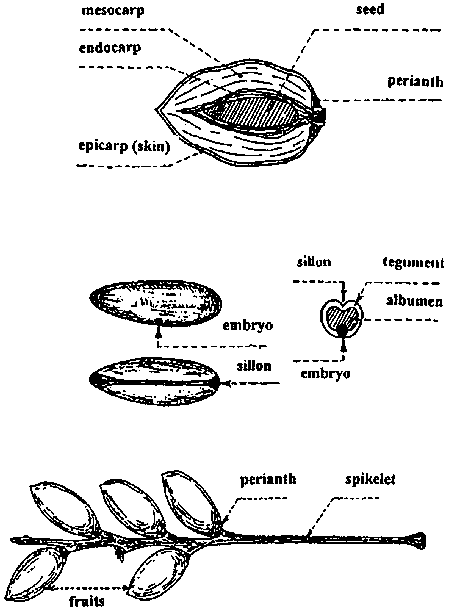Symbolism of the date palm on the coins of Herod Antipas

Herod Antipas 20-21 AD, Tiberias Mint
Photo Zurqieh Coins

Anatomy of date palm and fruit frond


Biblical Date Palm seedling from Masada.
Herod Antipas founded the city of Tiberias along the Sea of Galilee in 20 AD. His first coin shows a young date palm from a seedling. The iconography of his coins must be understood in relation to date palm cultivation. The date palm was the “Tree of Life” in the ancient Levant. It’s economical importance cannot be over emphasized in the time of Christ. Date fruit, construction materials, and medicines can all be acquired from this oasis tree. The coins of Antipas are socio-political statements veiled in the context of date palm agriculture. The date palm is a representation of the city of Tiberius as it grows and also represents the influence of Antipas. Much like the parables of Jesus Christ, this is how a first century Galilean would think and relate to their environment. The inscriptions are Greek and declare "Herod the Tetrarch" and the place name of Tiberias in a date fruit wreath. Herod Antipas was the son of Herod the Great and was educated in Rome to become a puppet King of Rome. As a client or puppet king, pleasing the Roman Emperor Tiberius was paramount to the future of Antipas. He founded the city of Tiberias and dedicated it to the Emperor Tiberius. He even renamed the Sea of Galilee, "Lake Tiberias." This coincided with the great solar eclipse of 19 AD which was seen over the entire Roman Empire. Founding cities after solar eclipses has been described in previous posts as it relates to Roman mythology.

The below coin shows the epsilon in a symbol as a “C” with a dot, like a star within a crescent. This palm is in the shape of a legionary standard. Note it was minted when Herod Antipas divorced the daughter of the Nabatean King Aretas IV. Just so happens the solar eclipse of 29 AD is likely represented by this symbol. At the same time Herod Philip refounded Bethsaida as Julius-Livia. This was in honor of the emperor’s mother Livia who died on September 28, 0029 AD.

Herod Antipas 30-31 AD, Tiberias Mint
Photo Athena Numismatics



Biblical palm date planted from seed found in excavations from Masada

Herod Antipas 30-31 AD, Tiberias mint
Photo Fontanille Coins
This coin shows date palm fruit at the end of the palm. Not enough for a harvest but likely indicative of when to remove a date palm offshoot for planting. It displays the cultivation techniques of 30 AD were like today. It can take 5-8 years before the plant begins to produce fruit and is mature enough to remove a offshoot for planting. Note cultivation of date palms by planting seeds is not reliable on a mass production scale. Obviously Herod Antipas in 30 AD is planning to expand his influence by agricultural and military endeavors. The coins of Antipas also show the major economical export during his reign was the date palm. Unfortunately there is the undercurrent of Roman slavery with industrial agriculture in the first century Judea. We even hear the evidence of agricultural tenet based slavery in the parables of Jesus Christ.

Palm offshoots planted to cultivate new date palms

Herod Antipas 33-34 AD Tiberias mint
Photo Fontanille Coins


This is the most enigmatic coin of the Antipas series. A shofar appears to be announcing the date in Greek letters. This website is based on April 3, 33AD as the date of the crucifixion of Jesus Christ. This may represent a date palm being pruned to bear larger dates. Note also it may show a date fruit palm after the “harvest.” This may be the chaff without the fruit or dates. Did Christians begin to leave the Galilee due to persecution? Is Herod Antipas acknowledging the resurrection of Jesus Christ? Is the star of Bethlehem above the place name of Tiberius? Whatever Antipas believed the combined armies of Aretas IV and the defected army of his dead brother Philip attacked him after 34 AD. Antipas lost the battle and sent an emergency call to Tiberius and the governor of Antioch for help. Is the star representative of the solar eclipse of 33 AD seen in Parthia and China? Remember proxy wars are nothing new and Parthia had a lot to gain by disrupting Roman trade with the Far East around the Arabian peninsula.

The death of Emperor Tiberius on March 16, 0037 AD brought a halt to the Roman invasion of Nabatea. Herod Antipas took this opportunity to build up arms for a future war with the Nabateans. Agrippa I in his bid for power accused Antipas before Emperor Caligula of sedition against Rome due to his weapons cache and as a result Antipas and his wife were banished to Roman Gaul. Herod Agrippa I and Caligula were friends and Agrippa inherited Tiberias as a mature and prosperous city. The last coins of Antipas show mature date palms. We don't understand why Antipas chose the mint dates of 20-21 AD, 29-31 AD, 33-34 AD, and finally 39-40 AD. It appears the mintage cycles of Herod Antipas correlate to solar eclipse dates. A coincidence? As we have studied a solar eclipse in Roman mythology was a sign from the heavens for Roman expansion and domination. Considering that Antipas was educated in Rome, we can see from his coins that he was "sowing the seeds" of industrial date palm agriculture in ancient Israel. This most likely produced the sources of heavy taxation and slavery that would erupt in the Jewish Revolt in the coming decades.


Herod Antipas, Tiberias Mint 39-40 AD
Athena Numismatics




